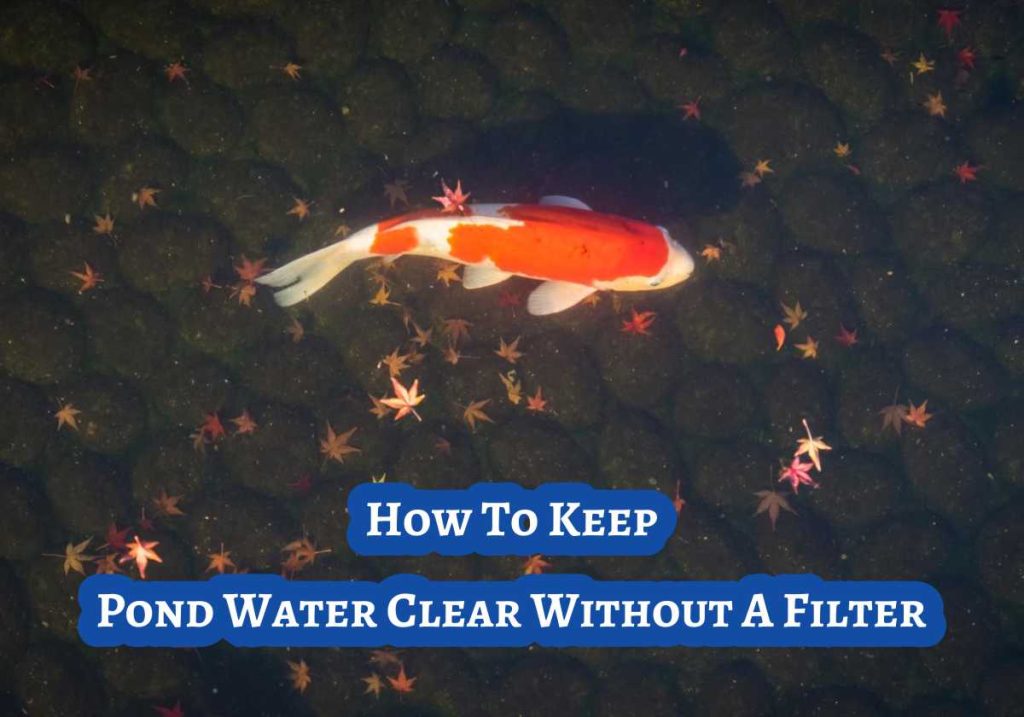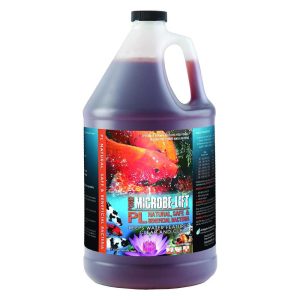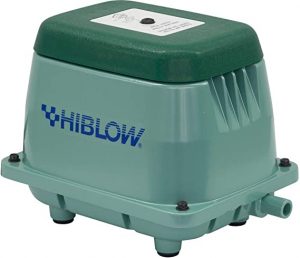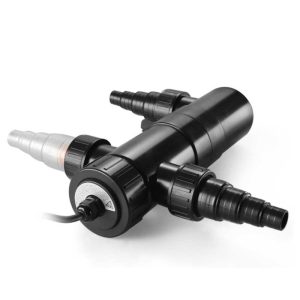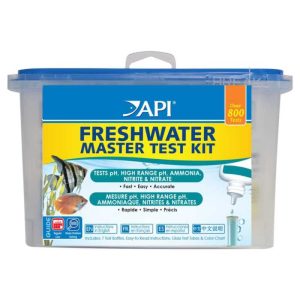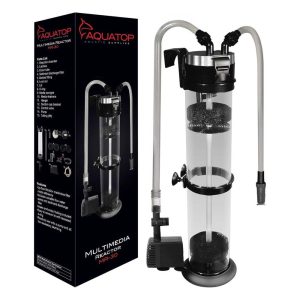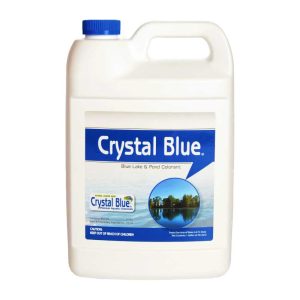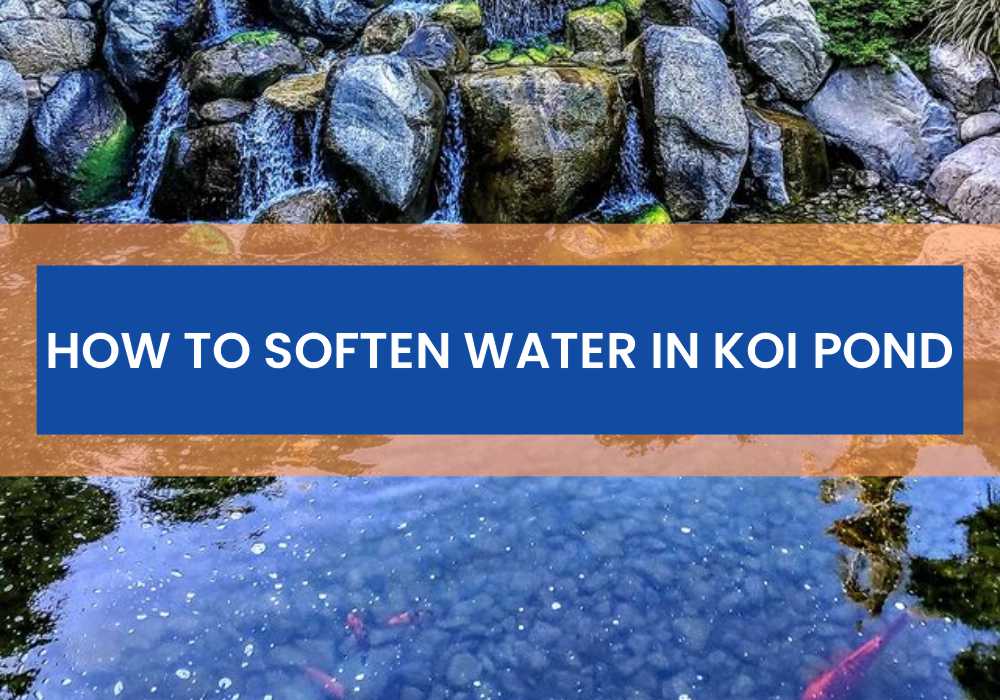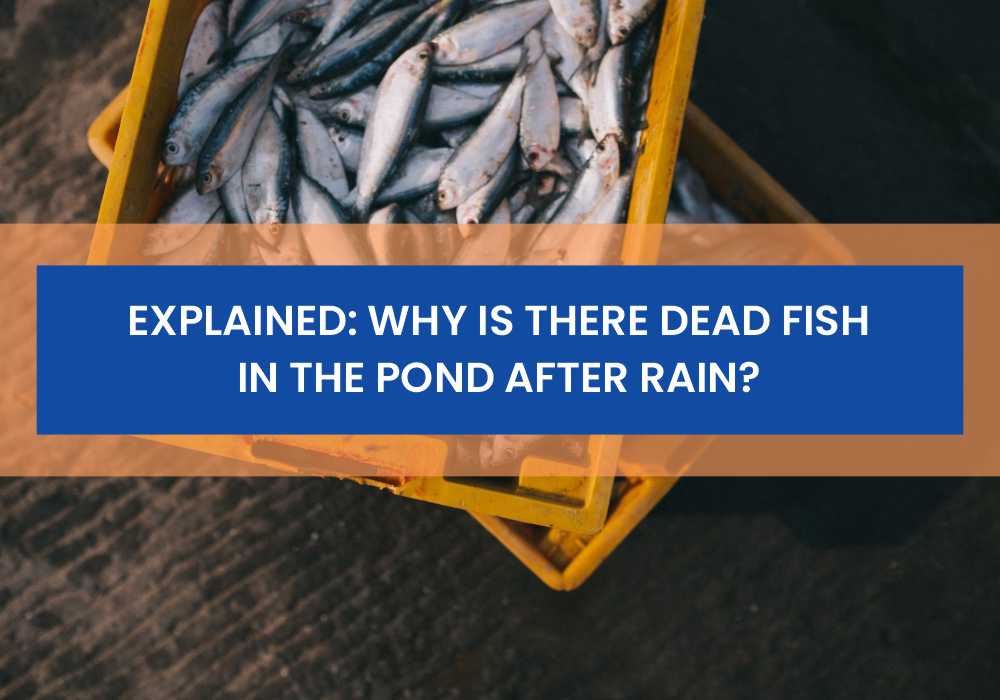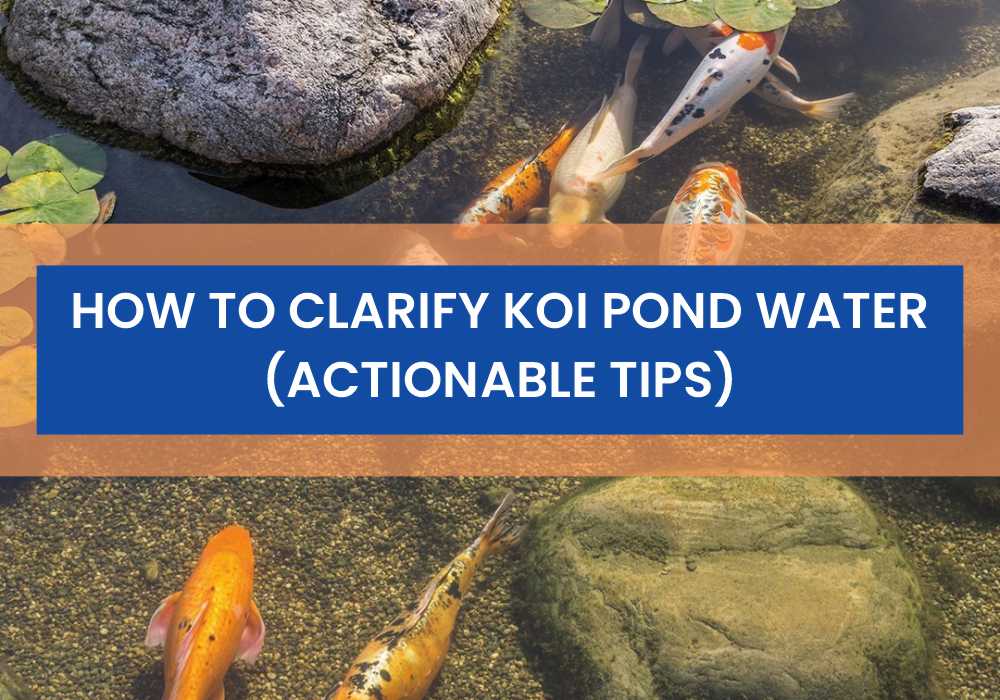As an Affiliate, We may earn a commission that doesn't cost you extra from qualifying purchases using links in this post. It helps keeps this blog running.
Are you tired of dealing with murky pond water and the hassle of filters? Look no further! This article unveils the secrets to keeping your pond water crystal-clear without a filter. Whether you’re a seasoned pond enthusiast or a beginner, discover practical, eco-friendly methods to maintain water clarity and foster a thriving ecosystem.
Learn how to harness the power of aquatic plants, beneficial bacteria, aeration, and manual maintenance techniques to create an enchanting pond that requires minimal effort. With straightforward solutions suitable for all pond owners, you’ll reduce algae growth, improve water quality, and save on maintenance costs.
Whether you’re a beginner or an experienced pond enthusiast, these eco-friendly techniques will help you achieve water clarity and promote a healthy aquatic ecosystem. Say goodbye to murky water and hello to a shimmering oasis that requires minimal maintenance and no traditional filters. Let’s dive in and discover the magic of clear pond water!
Is it Possible To Keep Ponds Clean Without Filters?
Yes, it is possible to keep ponds clean without filters, but it can be more challenging and requires careful management. Filters are commonly used in ponds to maintain water clarity by removing debris, excess nutrients, and other pollutants that can lead to water quality issues, there are alternative methods that can be effective in keeping ponds clean and clear.
How To Keep Pond Water Clear Without A Filter Using Natural Methods.
One of the most effective and environmentally-friendly ways to maintain clear pond water is by harnessing the power of nature itself. In this section, we will explore a variety of natural methods that can work wonders in achieving a crystal-clear pond without relying on filters.
1) Introduce Aquatic Plants for Clear Pond Water
Aquatic plants are the unsung heroes of a thriving pond ecosystem, playing a pivotal role in promoting clear and healthy water. Among the various types of aquatic plants, two stand out for their remarkable contributions.
- Oxygenating plants: Plants like Anacharis and Hornwort undertake a remarkable process of photosynthesis, releasing oxygen into the water during daylight hours. This not only benefits the pond’s inhabitants by oxygenating the water but also starves algae of the nutrients it requires to thrive by directly competing with them. As algae growth diminishes, pond water becomes clearer, creating a visually appealing and healthier environment.
- Floating plants: Plants like Water Hyacinth, Water Lettuce, and Duckweed offer another layer of support in the quest for clear water. By generously spreading across the water’s surface, they create a natural shading effect that shields the pond from excessive sunlight. In doing so, they reduce the availability of sunlight for algae, hindering their growth and diminishing the likelihood of murky water.
These floating heroes transform your pond into a captivating oasis while facilitating a balanced ecosystem that resists the encroachment of unwanted algae. With the combined forces of oxygenating and floating plants, you can bask in the beauty of a pond with stunningly clear water, all nurtured through nature’s ingenious design.
2) Use Beneficial Bacteria
When it comes to maintaining clear pond water without a filter, harnessing the power of beneficial bacteria can significantly help improve water quality. Beneficial bacteria play a pivotal role in breaking down organic matter, such as fish waste and decaying plant material, thereby reducing the accumulation of nutrients that fuel algae growth.
These natural microorganisms create a biological balance in the pond, preventing the onset of murky water and promoting a healthy aquatic environment. To optimize the effectiveness of beneficial bacteria, consider using the MICROBE-LIFT PL Pond Bacteria which contains specific strains like Nitrosomonas and Nitrobacter, that help to convert harmful ammonia into nitrites and then nitrates, respectively.
Introducing these bacteria to the pond at the start of each season can establish a stable ecosystem, bolstering water clarity and supporting the overall well-being of fish and plants. Because as the bacteria diligently break down organic matter, the pond water remains clearer, with reduced ammonia levels that would otherwise fuel algae blooms.
3) Double Down on Providing Aeration
Aeration is a crucial technique for maintaining clear pond water and promoting a healthy aquatic environment. By doubling down on introducing oxygen into the water, the aeration will help to enhance water circulation and prevent stagnation. This process not only supports the growth of beneficial bacteria, but it also discourages the proliferation of algae, which can lead to murky water conditions.
Implementing aeration in a pond can be achieved through various methods, such as using submersible aerators or surface fountains. For small ponds, a simple air pump with diffusers can be effective, while larger ponds may benefit from floating fountains that not only aerate but also add an aesthetic touch to the landscape. By incorporating aeration into pond maintenance practices, pond owners can significantly improve water clarity and foster a thriving ecosystem for aquatic life.
4) Don’t Overfeed Your Fishes
Proper fish feeding is crucial for maintaining clear pond water. Overfeeding your fish can lead to detrimental consequences for your pond’s water clarity and overall ecosystem. It is crucial to exercise caution and moderation when providing food to your aquatic pets. Overfeeding results in excessive fish waste and uneaten food, which in turn, increases nutrient levels in the water.
The excess nutrients act as a catalyst for algae blooms, causing the water to become murky and disrupting the delicate balance of the pond’s ecosystem. To maintain clear pond water without a filter, adhere to a feeding schedule and provide only the amount of food that your fish can consume within a few minutes, avoiding unnecessary waste and preserving water clarity.
Remember, practicing responsible fish feeding not only helps to keep your pond water clear but also contributes to the well-being of your aquatic friends. By adopting a mindful approach to feeding and monitoring the fish’s behavior and appetite, you can strike a harmonious balance that promotes a healthy and thriving pond environment. As an essential aspect of pond maintenance without a filter, managing fish food intake plays a vital role in ensuring the long-term clarity and ecological stability of your pond.
5) Take Advantage of A UV Sterilizer
To achieve crystal-clear pond water without the need for a traditional filter, one effective solution is to utilize a powerful tool called UV sterilizer to maintain pond water clarity without a filter. A UV sterilizer employs ultraviolet light to target and effectively eliminate algae, bacteria, and other harmful microorganisms present in the water. UV radiation disrupts the DNA and cellular structure of these organisms, preventing their growth and rendering them unable to reproduce and thus reducing their population. This leads to clearer and healthier pond water, promoting a thriving aquatic environment.
When selecting a UV sterilizer, consider the pond’s size and flow rate to ensure optimal efficiency. Regular maintenance and cleaning of the UV sterilizer are crucial to guarantee its peak performance in keeping the pond water crystal clear throughout the seasons. Implementing a UV sterilizer can significantly enhance water quality and provide a hassle-free solution for pond owners seeking to maintain clarity without a filter.
6) Don’t Overcrowd Your Pond
Maintaining a balanced pond ecosystem is crucial for clear water, and one essential aspect is to avoid overstocking. Overstocking with fish or other aquatic inhabitants can lead to an excess of organic waste and uneaten food, causing a spike in nutrient levels and an imbalance in the pond’s ecosystem, resulting in poor water quality. As a result, harmful algae blooms and water cloudiness may occur including a surge in ammonia and nitrate levels, because of the high levels of fish waste and uneaten food present in the crowded pond.
By carefully monitoring the pond’s carrying capacity and ensuring a suitable stocking level based on its size and water capacity, pond owners can prevent these issues. Keeping a well-managed population of aquatic life not only promotes water clarity but also ensures a healthier environment for the pond’s inhabitants.
Careful consideration should be given to the number and size of aquatic species introduced into the pond. By considering the pond’s size and natural capacity when stocking fish in the pond, pond owners can ensure a healthier and clearer aquatic environment for the long term.
7) Frequent Partial Water Changes
Frequent partial water changes are one of the vital things you’ll need to do to maintain clear pond water without a filter. These water changes will involve replacing a portion of the pond water regularly to prevent the buildup of excess nutrients and pollutants. Performing partial water changes will help to dilute the accumulated waste, thereby reducing the risk of algae blooms and cloudy water.
To execute this method effectively, use a pond water test kit like the API FRESHWATER MASTER TEST KIT 800-Test to monitor water parameters and determine the appropriate frequency and volume of water changes based on the pond’s size and stocking levels. Implementing regular partial water changes and dechlorinating the water if it’s from the tap ensures a healthier pond environment, promoting water clarity and supporting the overall well-being of aquatic life.
8) Clean Your Pond Regularly
Regular pond cleaning is a vital aspect of maintaining crystal-clear water and a healthy pond ecosystem. By adhering to a consistent cleaning schedule, you can prevent the buildup of debris, algae, and other organic matter that contribute to water cloudiness. Frequently skimming the pond surface to get rid of leaves, and twigs, and removing accumulated sediment from the pond bottom helps reduce excess nutrient levels that can cloud the water and disrupt the pond’s balance, mitigating the risk of algae blooms and improving water quality. Additionally, skimming the water surface with a net removes floating debris, enhancing water clarity.
Combine regular pond cleaning with other natural solutions like beneficial bacteria and aquatic plants to foster a thriving and transparent aquatic environment.
9) Use A Media Reactor
A Media Reactor is another alternative to pond filters that will help you achieve crystal-clear water in your pond. This compact and efficient device is a game-changer for aquarium enthusiasts. By utilizing a high-quality Media Reactor like The Aquatop Media Reactor with a 152 GPH Pump, you can effectively remove impurities and maintain water purity in your fish pond, promoting a healthy environment for your aquatic pets. Its small size makes it suitable for small and medium-sized fish tanks, ensuring that even the tiniest ecosystems can thrive in optimal water conditions. Embrace the power of a Nano Media Reactor to elevate your pond or aquarium maintenance routine and witness the transformation in water clarity and overall well-being of your fish.
10) Leverage The Use of Blue Pond Dye
You can keep your pond water clear and pristine without the need for a filter by using blue pond dye. The blue pond dye is an eco-friendly and effective solution that aids in maintaining water clarity and prevents unsightly algae growth. By adding pond dye to your pond water in the right proportion, you can block the penetration of harmful UV rays, which not only hampers the growth of algae but also keeps the water cooler and healthier for aquatic life. This alternative approach is especially beneficial for pond owners seeking eco-friendly and low-maintenance solutions to water quality management. Say goodbye to the hassle of filter cleaning and maintenance, and embrace the simplicity of pond dye to enjoy a beautiful and clear pond all year round.
PS: Do not use black pond dye as research has revealed it could attract mosquitoes to lay eggs in garden ponds
Do Ponds Need A Filter?
The need for a filter in a pond depends on various factors, such as the pond size, water volume, fish population, and desired water clarity. While filters can be beneficial in many cases, they are not always a strict requirement for maintaining a healthy and balanced pond ecosystem.
Smaller, well-designed ponds with minimal fish may thrive without a filter, relying on natural balances and regular maintenance. However, larger or heavily stocked ponds may benefit from a filter to handle increased waste and maintain optimal water quality. The decision to use a filter or explore alternative methods should consider the specific pond’s characteristics, desired water clarity, and the level of maintenance the pond owner can commit to.
Here are some points to consider when deciding whether a pond needs a filter:
- Pond Size: Smaller ponds, particularly those without fish, may not necessarily need a filter. The natural balance between plants, beneficial bacteria, and limited organic waste can often be sufficient to maintain water clarity and quality in small ponds.
- Fish Population: If the pond is stocked with a significant number of fish, especially koi or other larger species, a filter becomes more important. Fish produce waste, and without adequate filtration, the accumulated ammonia and other pollutants can harm aquatic life and lead to water quality issues.
- Water Clarity: Ponds that aim for crystal-clear water might benefit from using a filter. Filters can effectively remove suspended particles, debris, and excess nutrients that contribute to water cloudiness and algae growth.
- Pond Design: Well-designed ponds with adequate circulation and oxygenation may rely less on filters. Aeration, water movement, and the presence of aquatic plants can enhance natural filtration processes and help maintain water clarity.
- Maintenance Commitment: Ponds without filters may require more frequent manual maintenance, such as skimming debris, removing algae, and partial water changes. A filter can reduce the need for hands-on upkeep.
- Natural Filtration Alternatives: In the absence of a traditional filter, natural filtration methods like aquatic plants and beneficial bacteria can be employed. These organisms help absorb nutrients, break down organic matter, and improve water quality

I’m Akin Bouchard. Even though I now own several different fish species, I first became a koi pond owner because I loved these creatures and wanted to turn my passion into something more serious. I take pride in my collection of koi fish and love sharing my knowledge with others interested in these beautiful creatures.
A Comprehensive Guide to Training Your Fish to Perform Amazing Tricks Feats

